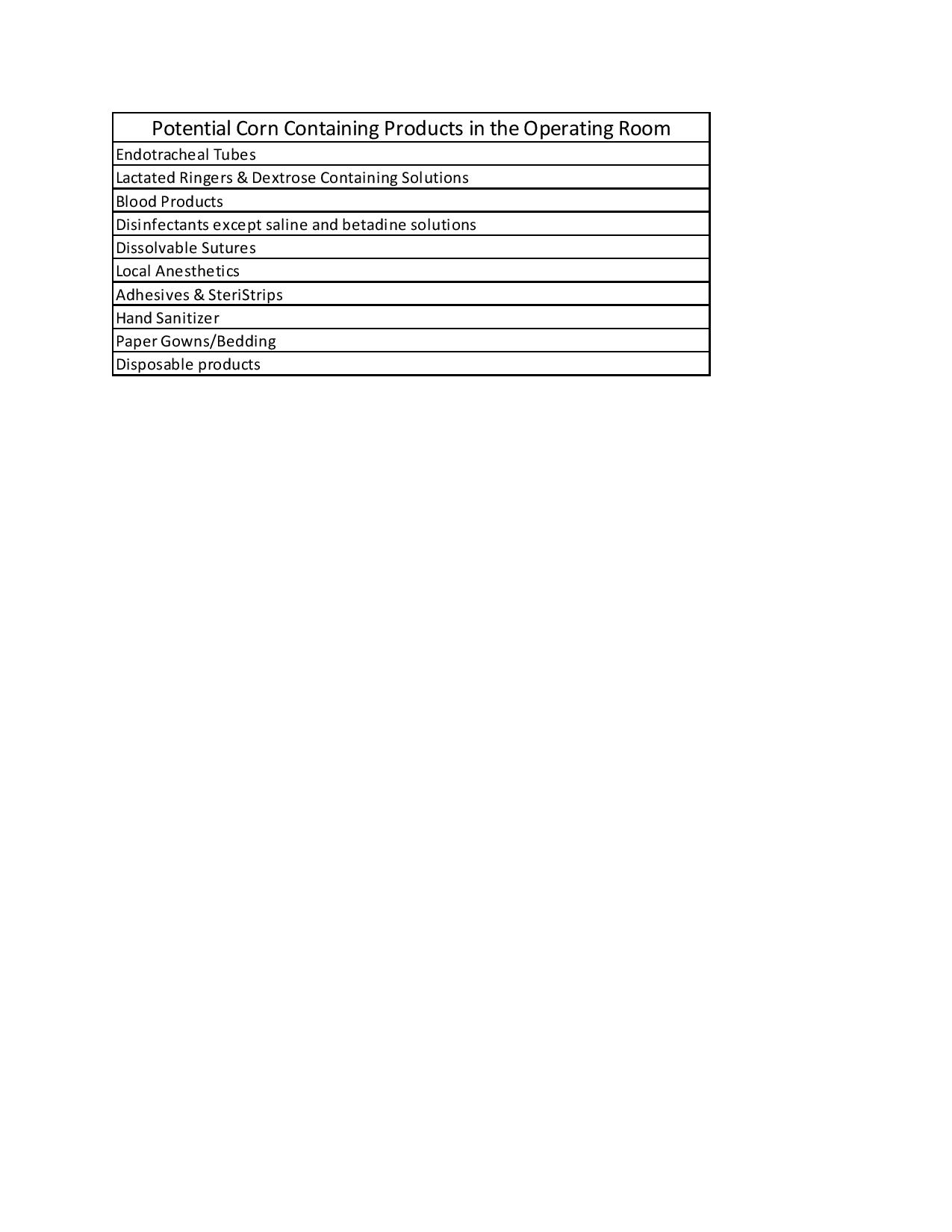NM-210
Anesthetic Challenges in a Patient with a Corn Allergy
Stevens S, Pranav H, Tkachenko I
The University of Chicago, Chicago, IL, USA
Introduction:
Corn allergy is a rare but an increasingly prevalent reaction to the consumption or exposure to, corn and corn derivatives. While the role of specific cells and their mediators in this allergy remains unclear. Symptoms are likely related to a rise in plasma histamine and IgE levels; ranging from nausea, vomiting, hives, and headaches to anaphylaxis. Due to the ubiquitous and insidious presence of corn products in anesthetic practice we present a case of successful management of a child with severe corn allergy.
Case Report:
A 2 year-old boy (10 kg) with failure to thrive and multiple food allergies presented for EGD and Colonoscopy. On exam, an active child with weight in the 1st percentile was noted. Allergic history was significant for anaphylactic reactions to corn products. Anesthetic history was notable for a GI procedure; a list of drugs used and corn containing medical products was provided by the patient’s mother. Prior to induction of general anesthesia airway supplies were washed in additive free 0.9% normal saline. No pre-medication was given and induction was achieved with mask inhalation of 8% sevoflurane in oxygen. After IV access, 4 mg of dexamethasone, 10 mg of rocuronium and 10 mg of diphenhydramine was administered while the patient was maintained on sevoflurane. At the conclusion of the procedure 0.2 mg of glycopyrrolate and 1 mg of neostigmine were given. The child was safely extubated, transported to the PACU and compounded ibuprofen given for post-operative analgesia.
Discussion:
In one case series of children with grain allergies and atopic dermatitis, only 3% of children were confirmed to have corn allergy. While corn allergy is relatively uncommon, it can result in significant distress for patients. Reactions to corn are typically IgE mediated, and can vary from mild cutaneous reactions to life-threatening anaphylaxis.1
Preoperative discussion and planning is imperative. It is important to elicit the severity of the corn allergy from family. Additionally, interdisciplinary discussion is vital to take appropriate safety precautions. Often, a discussion with a pharmacist prior to surgery can guide appropriate medication and antibiotic therapy. Of note, several antibiotics are made in a corn based growth medium. Premedication with a H1, H2 blocker and steroid may be considered. Further considerations include intravenous fluid administration, as normal saline is the fluid of choice. Corn derived dextrose containing fluids and lactated ringers (lactic acid is fermented a corn based medium) should be avoided.2
Patients with a history of anaphylaxis to corn, significant anesthetic preparation is warranted. Research is limited regarding direct correlation between corn based products in the operating room and reactions in patients with a corn allergy. Multiple case reports have discussed anaphylactic reactions to cornstarch powder on surgical gloves, the use of which has been banned by the FDA.3 Other corn based products are listed in table 1 and should be considered when managing a patient with history of a corn allergy.
Conclusion :
Appropriate preoperative planning and interdisciplinary involvement is important to the anesthetic management of patients with a corn allergy.
Top













